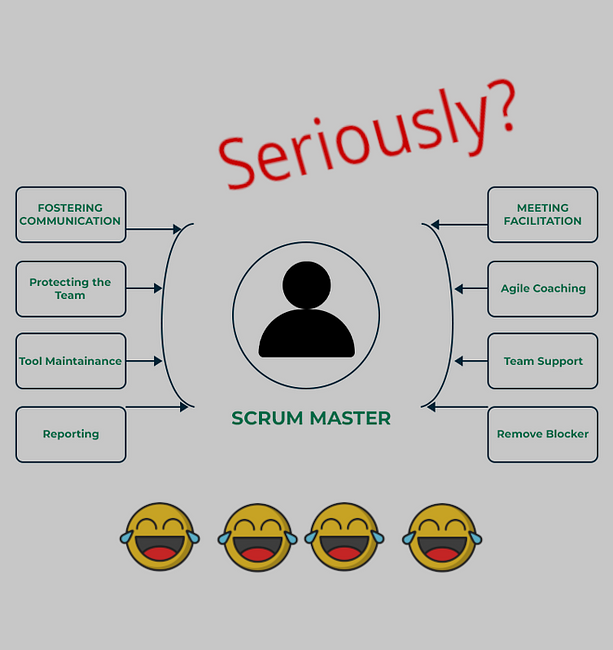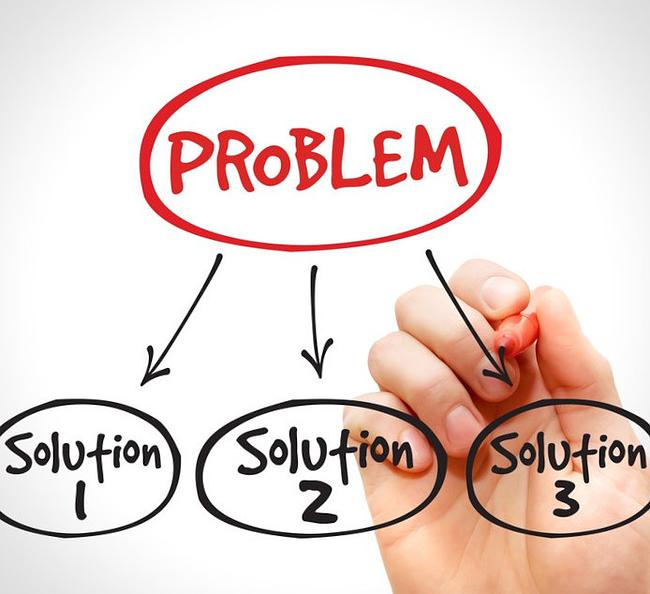
Product Management
Monday, June 02, 2025
How to find the right solutions for your product problems
In this article, we will address a problem that, I believe, is more of a choice than a real problem: how to find the right solutions for your product problems. For this, we will talk about some tools that can help you in your choices, such as:
- Brainstorm
- Crazy 8’s
- MVP Matrix
But first, as usual, I need to make some disclaimers to consider when making a good choice.
The first is: to do an initial analysis to understand the market, what your users want from your product. An article that can help you is that one: “How to create a market analysis and avoid surprises in your product launch”
The second is that every change in a product and project will lead to changes in the processes involved. Like any change, we need to know how to map, negotiate, and convince the people involved. Here I explain well how to manage stakeholders: “Stakeholders – improving your power and impact”

The third is the famous thinking outside the box. In the past, I always wondered what this “thinking outside” was and discovered that there is nothing better than talking to people. They will give you different points of view from yours and lead you to completely unknown ideas.
Fourth: take things away from the right place. Sometimes changing the raison d'être of an object, idea, or product can be the beginning of a great idea. Example: during the pandemic, there was no way to go to the cinema. Then someone invented the idea of making a cinema in a parking lot. Great idea, right?

The last is: do not return to the boxes. In day-to-day life, after having an idea, it is easy to be dragged by daily activities. Find time to execute new ideas, always remembering that a good idea never realized is worse than a medium idea DONE!
Having said that, I will move on to some tools that can help you in generating ideas. I start with the best known:
Brainstorm
Brainstorm is essentially the generation of ideas from participants, without considering whether they are right or wrong. Everything is valid! The organizer of the debate brings a problem. Ex:
- We need to double the sales of our website
And so the participants' ideas begin:
- We need to give a 10% discount
- We need to call each user by phone and offer a product.
- We need to put a monkey dancing tango with one of our products on the site.
- We need to ask Bruce Springsteen to write a song about one of our products.
Yes, there are ideas completely distant from what can be done. This is normal and should not be rejected. At a later stage, the team will take each idea and start discussing why that idea could be implemented. What can be gained and what can be lost. It is almost like using the double-diamond technique for generating ideas. I will write an article that will facilitate understanding: “How to use the double-diamond technique.”
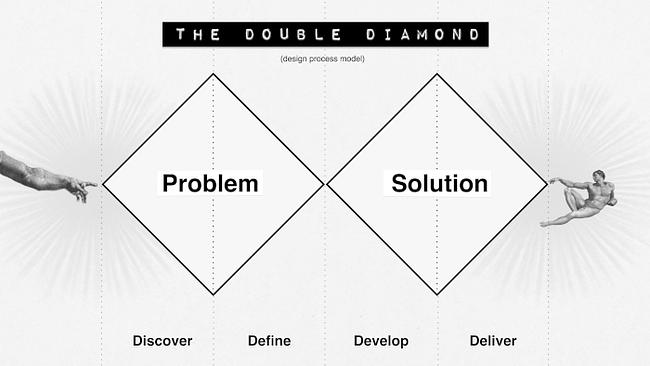
Crazy 8’s
Fold a sheet of paper 3 times and unfold it afterward. You will have 8 different spaces to start your crazy 8’s. I will go into details:
At the beginning, the organizer will propose a problem. Here I will use a different problem from the initial one simply to maintain pleasant reading:
- Our customer is leaving the cart without completing the purchase.
The first rule is: no one can write sentences in the spaces. Everyone must draw the idea. It doesn’t matter if you draw well or not, think of it as a doodle.
Second: the organizer will give you 40 seconds for each drawing
Third: Do not think too much. The first idea that comes to mind is the one we need to draw, do not waste time looking for ideas. The first that appears is the one drawn.
Fourth: impossible ideas are valid and serve to unlock creativity.
Lastly: bad ideas can be improved in the next drawing. We can also steal them from a friend and improve them.
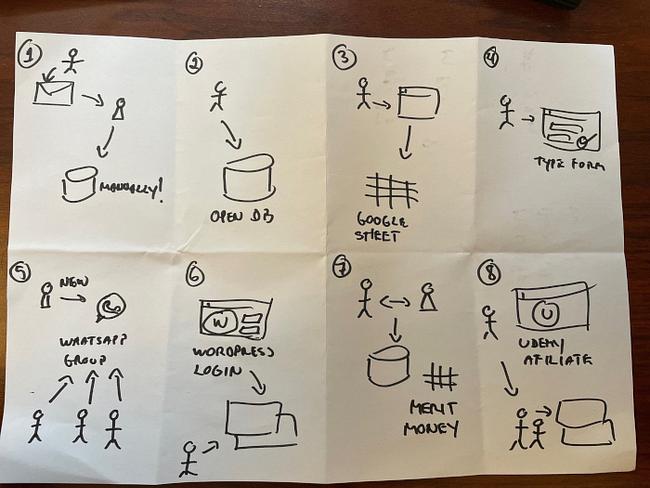
Then, the organizer will take the generated ideas and, as in the brainstorm, discuss with the team until arriving at one (two, three) final idea that will lead to the next step, the MVP. I leave here a good book on ideas: Steal Like an Artist – Austin Kleon
MVP
I will be brief here because I have another article that explains the MVP well. In summary, in this session we make a minimum product and test it in the market. We use the creation of hypotheses and the creation of the MVP itself. I leave here the link to the article: “How to create a market analysis and avoid surprises in your product launch”
MVP Matrix
Along with our work of creating ideas to solve a problem, sometimes (almost always) it happens that more than one idea passes through the team's funnel. Now it is up to us to choose which ideas we can implement first and which ones later.
I leave here the MVP matrix, which is a tool to categorize ideas and make their order clearer. The idea is simple, we make a grid with the following phrases:
- Important
- Not important
- Urgent
- Not urgent
Then we put the following information in the quadrants:
- Do
- Delegate
- Plan development as beta
- Eliminate
In the end, we put the ideas in the quadrants, considering the importance of their implementation.
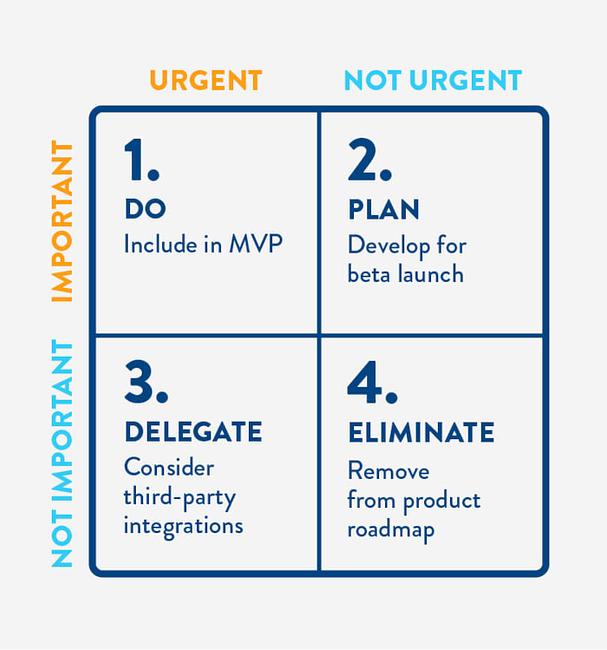
Quick explanation:
- Important vs urgent – do now!
- Important vs not urgent – plan for a later release
- Not important vs urgent – if possible, delegate to another company
- Not important vs not urgent – don't do it
Afterward, we can use the PDCA cycle to control adjustments and improvements. I will soon write a chronicle on: “Continuous improvement and PDCA cycle.”
I have come to the end of this article. Here you have learned the techniques of brainstorm, crazy 8’s, and the MVP matrix to help you find good answers to your product/project problems. What do you think? Do you use any other techniques, and would you like to share them? Give a like to this article, comment on LinkedIn or share on your social networks.
See you soon!
Erik Scaranello




